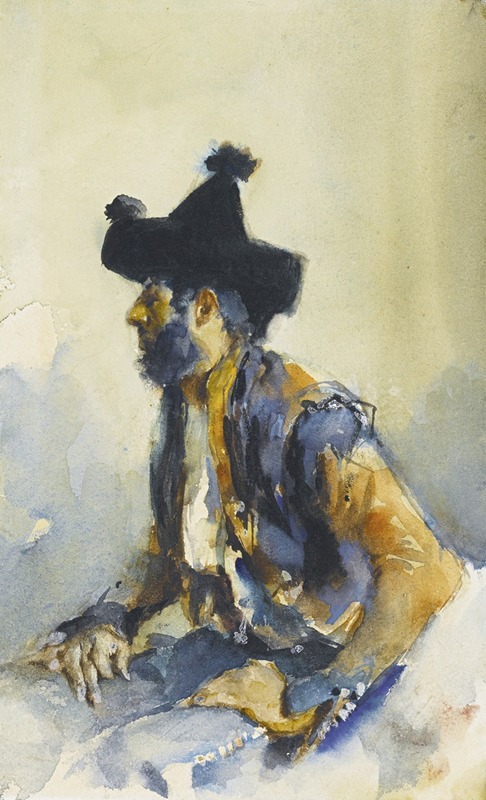
King of the Gypsies
A hand-painted replica of John Singer Sargent’s masterpiece King of the Gypsies, meticulously crafted by professional artists to capture the true essence of the original. Each piece is created with museum-quality canvas and rare mineral pigments, carefully painted by experienced artists with delicate brushstrokes and rich, layered colors to perfectly recreate the texture of the original artwork. Unlike machine-printed reproductions, this hand-painted version brings the painting to life, infused with the artist’s emotions and skill in every stroke. Whether for personal collection or home decoration, it instantly elevates the artistic atmosphere of any space.
"King of the Gypsies" is a painting by the renowned American artist John Singer Sargent, who is celebrated for his portraits and depictions of high society in the late 19th and early 20th centuries. Sargent was born in 1856 in Florence, Italy, to American expatriate parents and became one of the leading portrait painters of his generation, known for his technical prowess and ability to capture the character and personality of his subjects.
The painting "King of the Gypsies" was completed in 1912. It is one of Sargent's works that reflects his interest in diverse subjects beyond the elite circles for which he was most famous. This painting is part of a broader series of works that Sargent created during his travels in Europe, where he often depicted people from various walks of life, including those on the fringes of society.
"King of the Gypsies" portrays a Romani man, capturing the essence of his character with Sargent's characteristic attention to detail and use of light. The painting is noted for its vibrant colors and dynamic composition, which are hallmarks of Sargent's style. The subject's attire and demeanor suggest a sense of pride and dignity, which Sargent often sought to convey in his portraits, regardless of the social status of his subjects.
Sargent's interest in painting Romani people and other marginalized groups was part of a broader trend among artists of the time, who were increasingly drawn to subjects outside the mainstream. This interest was partly fueled by the Romantic movement's fascination with the exotic and the "noble savage," as well as a growing ethnographic interest in different cultures.
The painting is housed in the collection of the Royal Academy of Arts in London, an institution with which Sargent had a long-standing relationship. He was elected an Associate of the Royal Academy in 1894 and became a full Academician in 1897. Sargent's works are part of numerous prestigious collections worldwide, and he remains a highly regarded figure in the history of art.
"King of the Gypsies" exemplifies Sargent's ability to transcend the conventions of portraiture by infusing his subjects with a sense of individuality and life. His work continues to be studied and admired for its technical brilliance and its insightful portrayal of human character.
Sargent's legacy as an artist is marked by his versatility and his ability to capture the essence of his subjects, whether they were members of the aristocracy or individuals from more humble backgrounds. His paintings offer a window into the diverse tapestry of human experience during his time, and "King of the Gypsies" is a testament to his enduring interest in the richness of human diversity.


















